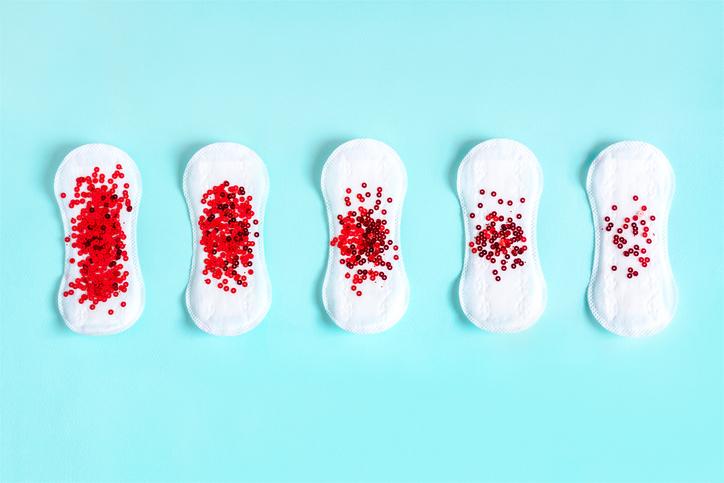After childbirth, it is normal for a woman to experience bleeding and pass some postpartum blood clots because the uterus contacts and becoming smaller. During this recovery time, the woman’s body begins the process of restoring itself to a pre-pregnancy state and prepared for breastfeeding.
Postpartum blood clots
Two types of blood clots after birth can be seen –
- Clots that are passed through the vagina in the days after birth are from the shedding of the womb’s lining and the detachment of the placenta.
- Clots that happen inside the body’s veins are rare but can be serious.
While some bleeding and clotting are to be expected, a woman should talk to the doctor about excessive or large clots, unusually heavy bleeding, or any other symptoms.
What to expect after birth?
The normal discharge of the uterine lining after childbirth is known as lochia. It is made up of blood, mucus, other tissues, and some bacteria. Every woman is different but most women can expect –
First 24 hours after birth
Bleeding is heaviest with bright red blood. Clots may range in size from large to small. Any soaking of a sanitary pad within one hour should be brought to the attention of medical staff, as it can sign of dangerous bleeding.
Up to 6 days after birth
Blood flow should gradually become lighter and maybe close to a normal menstrual period flow. Clots can be of any size like a quarter or smaller. The blood may become brownish or fade to a watery and also pinkish red. If blood is bright red in color which continues to flow then women should consult a doctor as it may indicate that bleeding is not slowing down properly.
7 to 10 days after birth
Blood should continue to be mostly dark brownish or a faded pinkish red. The flow should be lighter than it was during the first week. However, breastfeeding women may notice a small gush of blood during or after nursing or pumping.
11 to 14 days after birth
The blood flow should continue to lighten and any clots will be very small. Some women notice that the flow becomes temporarily heavier or brighter in color after doing physical activity.
2 to 6 weeks after birth
Women may go several hours without any bleeding at all. The flow may change to white or yellow as the uterus works back to its pre-pregnant state.
6 weeks after birth
Small amounts of brown or yellow spotting are normal. The new start of a heavy flow could be a woman’s menstrual period, especially if not breastfeeding. However, any new bleeding or clots should be checked by a doctor.
Signs of a dangerous blood clot
For dangerous blood clots, the signs can be –
- Pain, redness, swelling, or warmth in one leg that can indicate deep vein thrombosis
- Shortness of breath or trouble breathing
- Chest pain
- Dizziness or fainting
- Chills or clammy skin
- Rapid heart rate
How to prevent postpartum blood clots
- Getting up and moving regularly throughout the day
- Being aware of any personal risk factors for blood clots and sharing these with the doctor
- Beginning exercise when the doctor approves
- Seeing the doctor as postpartum visits
When to see a doctor?
With so many changes happening to women after birth, it can be hard to know what is normal and when to see a doctor. Having any unusual symptoms, bleeding, excessive clots, feeling unwell or signs of a clot in a vein are reasons to consult the doctor.
Conclusion
Having blood clots after pregnancy is normal but it can be a dangerous sign if any abnormality like excessive blood is seen. Contact the doctor for having postpartum blood clots.
References –
- blood clots after birth: symptoms, treatment, and when to see a doctor (medicalnewstoday.com)
- blood clots after birth: symptoms, treatment, and more (healthline.com)












